How to recognize severe hair loss
Within the natural hair cycle, a loss of up to around 100 hairs a day is normal. If this amount is significantly exceeded, this is referred to as hair loss.
Visible signs of this are a noticeable amount of hair on the pillow or clothing as well as in the comb, brush or sink after washing your hair. The hair may appear increasingly sparse or thin and lacking in volume. Thinning or bald patches may appear on the scalp - in men most frequently in the form of "receding hairline" and/or a receding hairline on the forehead, in women more often due to a widened hairline in the area of the middle parting.
Those affected also often write to us that they have suddenly lost their hair in clumps. The situation is also described as sudden hair loss, severe hair loss or extreme hair loss.
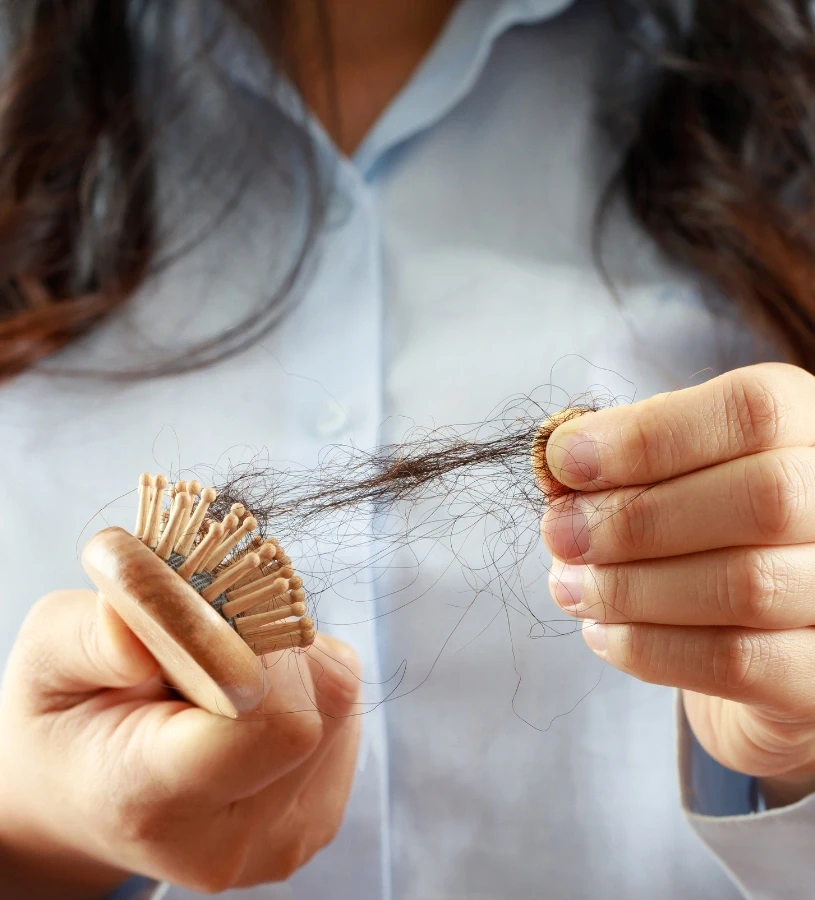
The most common causes
Hair growth is basically controlled by hormones and requires a healthy scalp. Only in this way can the hair follicles develop healthily for strong hair growth or, ideally, even form again.
There can be many reasons for severe hair loss. The most common causes of hair loss include
Have you suddenly experienced severe hair loss? Hair loss is often preceded by a so-called telogen effluvium: a hair naturally enters the resting or shedding phase (telogen phase) after two to six years, after which it becomes increasingly loose over a few months and then falls out.
However, if the hair roots are damaged or undersupplied, this phase begins earlier, so that hair loss increases visibly. This condition is initially reversible if the cause is eliminated promptly.
The so-called hereditary hair loss (alopecia androgenetica) must be distinguished from the sudden onset of severe hair loss. The hair loss extends over several years, accompanied by rather moderate hair loss, which manifests itself as follows:
This is caused by an inherited predisposition in which the hair roots react sensitively to the hormone (dihydro-) testosterone.
Select the description that most closely matches your situation.
Hereditary hair loss in men
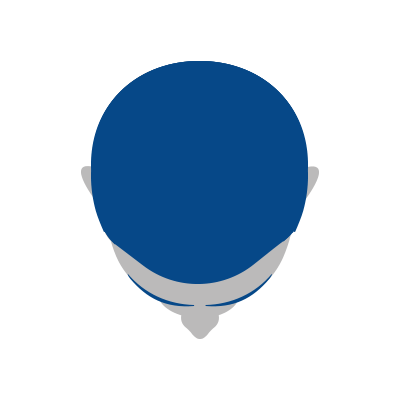
Hereditary hair loss in women
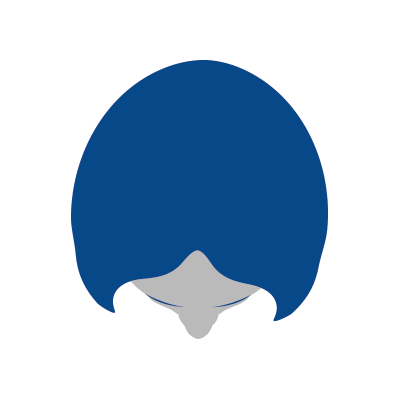
Circular hair loss
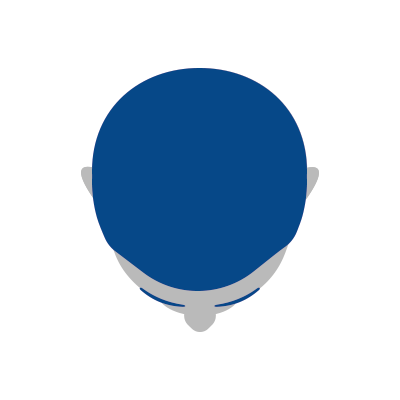
Hair loss as a result of chemotherapy
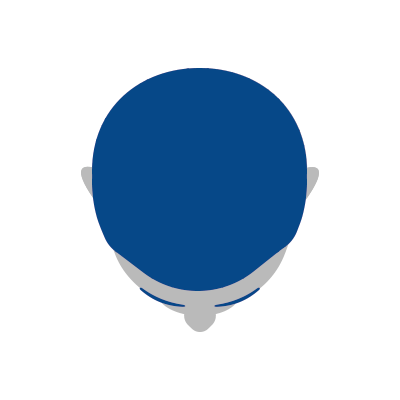
In the case of hereditary (androgenetic) hair loss, various drugs are used which generally reduce the effect or production of (dihydro)testosterone.
Background: Hair roots often react hypersensitively to this testosterone derivative in cases of hereditary hair loss and then atrophy under its influence. A reduction in the hormone can therefore slow down hair loss and promote the growth of new hair.
In women with androgenetic hair loss, prescription antiandrogens are also used, which block the (dihydro)testosterone receptors.
However, internal use should be weighed up against the possible side effects.
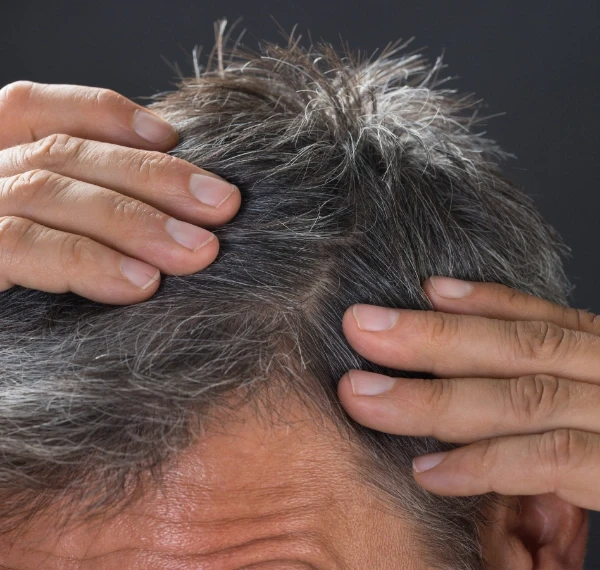
Externally applied active ingredients have the advantage that they are applied directly at the site of action and therefore generally do not cause any systemic side effects (affecting the whole body). These are usually active ingredients that have regenerative or circulation-promoting properties.
Caffeine**, for example, is often used. Caffeine supports the growth of the hair root in the form of shampoos or tinctures. These care products are massaged into the scalp to stimulate blood circulation in the scalp and activate the hair follicles.
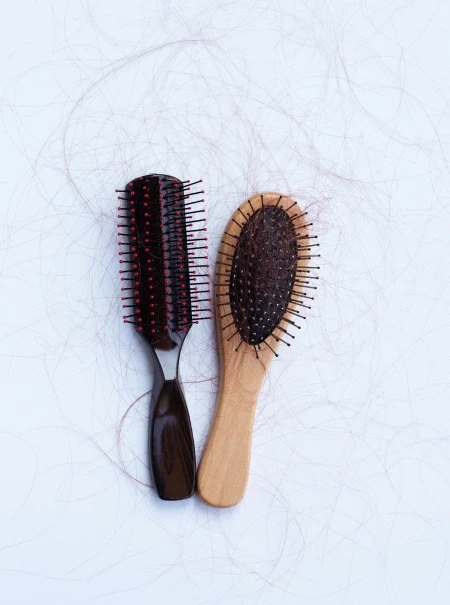
Another treatment option is thymus peptides: based on numerous independent studies and observational studies, more and more doctors are recommending their use without side effects.
Research has shown that thymus peptides, when applied externally, have a regenerating and strengthening effect on the hair follicles. The cell supply at the hair root is improved, the formation of new hair cells is supported and the growth phase of the hair is significantly extended.
Thymus peptides are organic compounds that the body also produces itself. They are absorbed by the hair follicles and strengthen them. This is a natural biological process that occurs naturally in most people at a young age.
It is only when the hormonal balance is upset, whether due to age or external influences such as stress, that the body can no longer supply the hair follicles with sufficient amounts on its own.
Thymus peptide-containing preparations can then be used to help with all types of hair loss. Thymus peptides are therefore an effective alternative with no side effects.
More about thymus peptides and hair lossA balanced diet with moderate consumption of stimulants provides the nutrients for a healthy skin metabolism. A daily, gentle brush massage (soft bristles) of the scalp should also stimulate blood flow to the hair roots.
Costly, but increasingly common in cases of increased hair loss: In addition to hair replacement, surgical hair transplantation is becoming more and more common - albeit purely symptomatic - usually involving the transplantation of the patient's own hair follicles in many small units from areas of the head with more hair.

Hair loss? Write to us!
Thymuskin offers you a realistic assessment of your personal situation - even before you buy.
" I was also pleased with the intensive personal advice I received here. This helped me to work through the discouraging phases that occurred from time to time. Thank you very much! "
Gabriele T., Thymuskin customer

Here you will find the right products for your personal situation.
Hair loss all over the head
This is an increased hair loss in the area of the entire hairy head.
If hair loss occurs, you have to do something. But what? Can shampoos really help with hair loss?